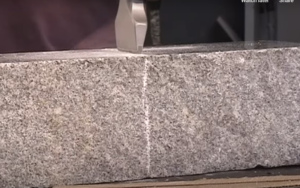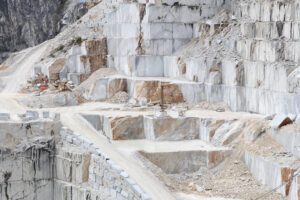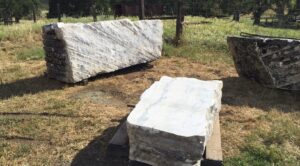
Home » Carve » Soft Stone » Stone Queries: Carving Marble – March/Apr 2008

As an alabaster/limestone kind of person, I find the prospect of carving marble intriguing but a bit intimidating. Would I need a different set of tools, carbide or diamond for example, to work in marble?
The first piece I ever carved was in marble. Being uninformed (ignorant, or at least uninitiated) I used a ball peen hammer, cold chisel, wood rasp, metal file, and wet & dry sandpaper. I am still pleased with the result. Many of the tools you now use in softer stone are also usable in marble. Admittedly there are softer marbles and harder marbles but steel tools are often quite satisfactory, especially points, claws, and chisels, in both hand and air hammer carving. Because of its brittleness, carbide tips on those tools are ground to a blunter cutting edge and must be held at a steeper angle to the stone surface than steel tools. I prefer the feel of the cutting action of the sharper steel edges in marble, but this is only a personal preference not a commandment. You will probably learn to use the point and claw closer to the final surface than you may have in alabaster since most marble won’t bruise as easily as alabaster.
Steel rasps, rifflers and files are also very serviceable although they will wear a bit faster than carbide or diamond. Even so I have a small steel file that shows little wear after several years of being used on marble. I fear breaking or losing it because I have yet to find another like it. One place I would recommend carbide or diamond is in bits for die grinders or handpieces. They cost more than steel but they last much longer. At some point you may find an angle grinder with a diamond blade very useful for roughing out. I use one at some stage of carving nearly every piece I do but often I also use a hammer and point for waste removal, not for any esthetic or philosophical reasons but because it is very rapid way to move stone. But I do like an angle grinder for sanding and polishing broad surfaces.
Work first with lighter marbles, white or gray. Black, fine-grained marbles such as Belgian black are quite brittle and best worked with abrasives. Remember too that the term “marble” covers a multitude of stone types, some of which are difficult to work even with diamond tools.
You will probably have to give up your nail files, emery boards, and various sharp thingies that are great for detail work in softer stone but don’t be intimidated, or lured, by all of the specialized tools available. There is always another nifty tool out there and angle grinder envy can be insidious. On the other hand, have you seen the new tool that…






We need some kind of descriptive text here.